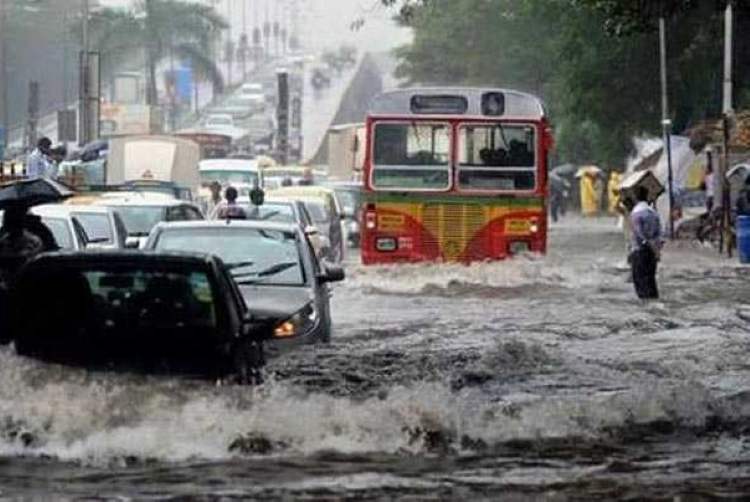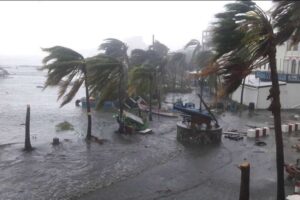
Incorporating climate risk playbook into business strategy: India’s economy, projected to grow 6.6 per cent in 2025, is powered by rapid industrial expansion, digital transformation, and infrastructure investment. Yet the very engines of growth have made Indian businesses increasingly vulnerable to climate shocks. According to the Climate Risk Index 2025 by Germanwatch, India ranks sixth globally among countries most affected by extreme weather events. The World Risk Report 2024 further notes that 60 per cent of India’s landmass lies in seismic zones and nearly 80 per cent of its coastline faces cyclone exposure. These figures translate not into abstract risks but into tangible threats to operations, supply chains, and workforce safety.
In this context, resilience has become a strategic necessity. For companies operating in India, building robust Business Continuity Plans (BCPs) and disaster-recovery frameworks is no longer optional; it is a competitive advantage. A climate risk playbook — explicitly approved and reviewed at the board level — should become as integral to corporate governance as audit and compliance committees. The time has come to move climate adaptation from the CSR annex to the board agenda.
READ I Delhi smog crisis: Pollution vs India’s climate ambition
Climate risk playbook core to continuity
Climate disruptions are no longer once-in-a-decade events. They are recurring stresses that test operational, financial, and reputational resilience. The Council on Energy, Environment and Water (CEEW) estimates that India lost $79.5 billion to climate-related disasters between 2000 and 2019. These are not peripheral events — they strike at the core of supply chains, logistics, and consumer markets. The Reserve Bank of India (RBI) has warned that climate change constitutes a systemic risk through credit, operational, and market channels.

When a heatwave reduces factory productivity, or a cyclone paralyses port operations, the ripple effects cascade across sectors. Yet corporate India continues to under-prepare. A 2024 Think Teal survey found that 40 per cent of Indian enterprises lack formal continuity and disaster-recovery strategies, while half review existing plans only once every three years. Such inertia can translate into weeks of downtime, strained investor confidence, and market share erosion. The lesson is clear: business continuity in the age of climate change cannot rely on optimism; it must rest on preparedness.
Bringing climate resilience into the boardroom
Despite the growing evidence, climate remains a peripheral discussion in most boardrooms — often clubbed under ESG or CSR. The fiduciary duty of boards now extends beyond quarterly profits to ensuring business survivability. It is no longer adequate for managements to delegate disaster planning to compliance teams. Boards must treat climate resilience as a governance responsibility that safeguards enterprise value.

The starting point is clarity. Boards need to understand both physical and transition risks. Physical risks arise from direct weather shocks—floods, cyclones, or droughts — while transition risks emerge from policy shifts, carbon pricing, and investor activism. The RBI’s discussion paper on climate risk calls for boards to approve climate-risk policies, integrate scenario analysis and stress tests into enterprise-risk management, and link these to capital allocation.
This implies that climate considerations must influence where new plants are located, how supply chains are structured, and how returns are computed. When boards demand climate-adjusted internal rates of return, they are not being over-cautious; they are being prudent. The boardroom must thus evolve from passive oversight to active risk navigation.
What a climate risk playbook looks like
An effective climate risk playbook begins with scenario-based planning. Instead of generic templates, companies should model region-specific hazards and their compound effects. A coastal plant in Tamil Nadu must prepare for cyclone-induced flooding, while a factory in Bihar must simulate both flood and heat-stress events. Service hubs in Delhi-NCR or Bengaluru must anticipate air-pollution restrictions, energy-grid stress, and water scarcity. The 2015 Chennai floods, which halted manufacturing for weeks and inflicted over ₹17 billion in losses across 10,000 MSMEs, showed how unprepared supply chains magnify economic shocks.
Beyond hazard assessment, infrastructure and supply-chain resilience form the backbone of any playbook. It is not enough for a company’s own facility to be climate-proof if its key suppliers remain exposed. Firms must map critical suppliers, identify vulnerable transport routes, and diversify sourcing. Dual sourcing, climate-zoned warehousing, inventory buffers, and cloud-based recovery systems can prevent total shutdowns. The Business Continuity Institute notes that companies which invested in alternative logistics during past cyclones recovered 40 percent faster than their peers.
Communication, too, is critical. In India’s multilingual workforce, crisis communication cannot rely solely on English. Multilingual alerts—delivered through SMS, internal apps, or radio—help ensure that employees across shifts and regions respond quickly. Drills and simulation exercises involving local authorities, industrial associations, and even community volunteers reinforce readiness. Companies that invested in community-level coordination recovered far more smoothly during Cyclone Roanu in 2016 than during the Chennai floods a year earlier.
Finally, resilience must be aligned with India’s evolving regulatory landscape. The RBI is preparing to mandate climate-risk disclosures and stress testing for banks. This will indirectly shape corporate borrowers’ access to credit. Non-financial firms, too, will find that investors and insurers demand transparent continuity frameworks. A board-approved climate risk playbook thus signals both compliance and credibility.
The cost of ignoring climate risk
Companies that fail to integrate climate resilience into core operations face three cascading risks. First, operational disruption — factories idled for weeks, logistics halted, and workforce displacement — translates into lost revenue. Second, financial losses mount through higher insurance premiums, lower valuations, and rising borrowing costs. Third, reputational damage can be swift, as investors increasingly judge corporate competence by how boards manage environmental risk.
Conversely, companies that embed resilience into strategy enjoy measurable gains. They protect cashflows, reduce cost of capital, and sustain production during disruptions. More importantly, they command investor trust in volatile markets. In the long run, resilience is not a cost centre but a differentiator.
From CSR to core strategy
For too long, climate adaptation has been relegated to CSR reports, treated as a demonstration of goodwill rather than good governance. But philanthropy cannot substitute for preparedness. The board’s mandate is to safeguard enterprise value, not merely reputation. When directors allocate budgets for flood-proofing, relocate vulnerable facilities, or incentivise energy-efficient retrofits, they fulfil their fiduciary duty.
Eight in ten Indians live in climate-vulnerable districts. To ignore this context is to ignore the national business environment itself. Early movers that embed climate foresight into corporate DNA will gain a decisive edge in regulatory compliance, investor confidence, and market access.
Corporate India must now treat climate resilience as integral to competitiveness. Regulators and industry bodies should mandate board-approved climate-risk policies and scenario analyses across sectors. Industry associations can coordinate shared data repositories and hazard maps, reducing duplication and information gaps. The RBI and NITI Aayog could design incentive frameworks—such as tax breaks or low-cost credit—for investments in resilience infrastructure.
If these measures are implemented, climate-proofing will evolve from being a defensive measure to an enabler of sustainable growth. In a reform-driven economy, continuity is itself a form of competitiveness. The difference between a company that weathers the storm and one that collapses under it will not lie in its size or market share—but in whether it built, tested, and owned its climate risk playbook.
